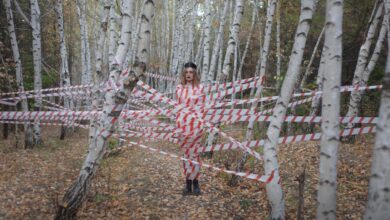Upon moving to Tashkent, the first thing that caught my eye was the mosaic patterns on the side of my new home. Although I was familiar with Soviet mosaics, these were unlike anything I’d seen in Belarus, Georgia, or Ukraine. I always found mosaics beautiful, but what did I know about them? Artifacts from the Soviet Union, on the ruins of which I was born. These mosaics captivated me, presenting an idealized era that only existed in the thaw-era films. However, Tashkent’s mosaics are unique. As I wandered the neighborhood, I discovered around ten mosaics, each adorned with distinct patterns, far removed from the typical Soviet motifs.

In 1966, Tashkent was struck by a 5.2 magnitude earthquake, followed by powerful aftershocks of 8-9 magnitude. Many buildings crumbled, leaving over 300,000 people homeless. Builders, architects, and artists from various Soviet republics flocked to Tashkent to aid in the reconstruction. This marked the beginning of Tashkent’s mosaic legacy. The Zharsky brothers — Peter, Nikolai, and Alexander — are among the most renowned mosaic artists. They created about 240 mosaics in Tashkent, mostly on residential buildings. Their materials included ceramics, smalt, concrete, metal, and even semi-precious stones. The Zharskys mainly used ceramic tiles, experimenting with texture and volume. By varying the thickness and shape of the pieces, they created dynamic, relief panels that seemed to come alive. These mosaics brought color to the otherwise uniform gray panel buildings. Sometimes, entire compositions on a single theme spanned multiple buildings in new neighborhoods. For the Soviet authorities, mosaics were a propaganda tool, but for the artists, they were a chance to create something intresting within strict constraints. The Zharsky brothers drew inspiration from traditional plant (islami) and geometric (girekh) patterns, occasionally incorporating images of birds and animals.

After the fall of the USSR, Uzbekistan, like many post-Soviet countries, began a process of decommunization. Monuments were removed, streets were renamed, Soviet buildings were demolished, and mosaics were painted over. Despite this, over 400 mosaics remain in Tashkent. The exact number is still unknown, as the inventory of Tashkent’s mosaics started recently. German architect Philipp Meuser was one of the first to recognize Tashkent’s mosaics and architecture as a unique cultural phenomenon that needs preservation and study. These mosaics are not only valuable as art but also as a testament to the collaborative efforts of architects, builders, and artists — the last are excluded from construction now.

In 2024, 157 mosaics were included in Uzbekistan’s list of cultural heritage sites. Until a few months ago, many mosaics were hidden behind advertising banners. Now, those banners have been removed, revealing a layer of Soviet history. As an observer, I found this transformation unusual. In many post-Soviet regions, mosaics face slow decay or destruction because the Soviet era was not a good time for many of the now independent republics. Uzbekistan, however, has shown that artifacts from a colonial past can be integrated into its history and used to attract tourists.














